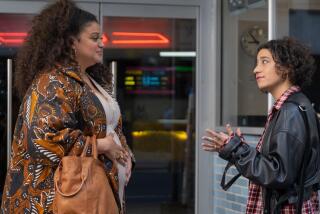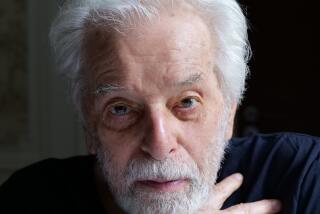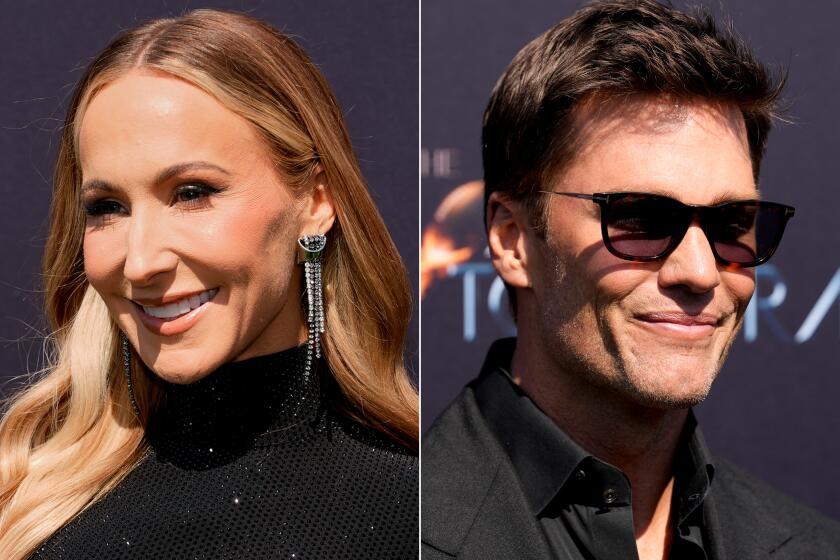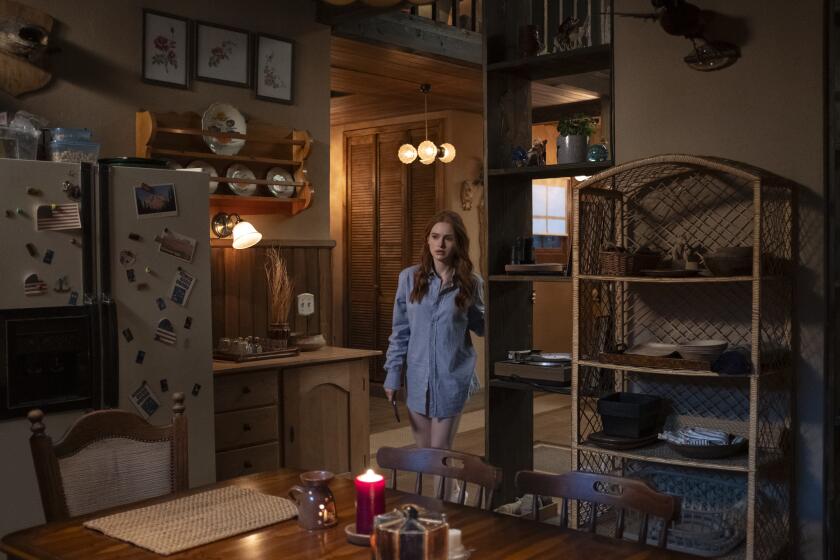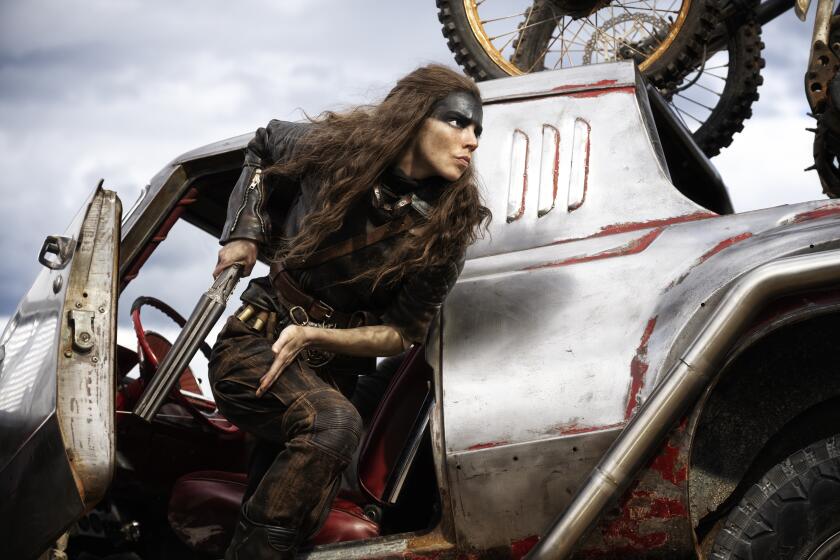The Art of DVD Talk
In the cool darkness of a Santa Monica sound studio one recent afternoon, director Michael Bay was re-watching his $135-million war and romance epic “Pearl Harbor”--and explaining, shot by shot, how he brought it to the screen.
Suddenly, there it was--the quick scene showing Japanese planes roaring over a group of American boys playing baseball at a little past sunrise on a Sunday morning. The shot appeared in trailers and became a lightning rod for critics who pointed out the obvious incongruity. It was time to retort.
“It’s funny when you hear press reports. They’re saying, ‘What are those kids doing playing out there so early in the morning? Why is the light so bright at 7 o’clock in the morning?’ Well,” Bay said, as if lecturing the crew in the control booth, “dawn is about 6 o’clock. It’s full, bright light at 7. People think I’m stylizing the moment.”
And so he went, describing how he made shots, pointing out historical references, slapping back at critics when he felt compelled.
For Hollywood directors these days, a picture isn’t really finished until they lay down the audio commentary track for the DVD. It gives them one last chance to parse creative decisions, confess to goofs and reply to critical tormentors.
For the moviegoing public, the DVD has become the key medium for divining the filmmaking process.
“It’s a wonderful learning tool,” director Peter Bogdanovich said. “It gives people who are interested a chance to hear exactly what the director had in mind.”
Commentaries have been around since the laser disc days of the mid-1980s, but now Hollywood recognizes them as an art form of their own--which means that even if Bay doesn’t win an Academy Award for “Pearl Harbor,” he can always hope for a Video Premiere Award for best audio commentary.
Handed out by the trade paper Variety’s Video Business magazine--which will announce the 2001 winners on Oct. 23--Video Premiere awards recognize achievement in straight-to-video releases and in new content for theatrical films released on DVD--”making-of” documentaries, deleted scenes, even menu design.
It’s a competition that cuts through an odd strata of Hollywood: This year’s nominees range from “Forrest Gump” (for best overall new extra features) to “Barbie in the Nutcracker” (best animated video premiere movie).
But to win the audio commentary award, you need to be an unusually facile storyteller, said Scott Hettrick, Video Business editor in chief and head of the awards program.
“Some actors and directors are very good at it, with enormously entertaining stories with lots of anecdotes,” Hettrick said. “But others you’d expect to be good are, well, dry and boring. We try to recognize those who do it well.”
The awards were first given last winter for DVDs introduced in 2000. The first audio commentary winners were Harry Shearer, Christopher Guest and Michael McKean for the 1984 faux documentary “This Is Spinal Tap.”
The new crop of best audio commentary nominees for 2001 include Francis Ford Coppola (“The Godfather”); Arnold Schwarzenegger (“Total Recall”); Rob Reiner (“When Harry Met Sally ... “); George Lucas and his creative team (“Star Wars: Episode I The Phantom Menace”); John Cleese, Eric Idle and Michael Palin (“Monty Python and the Holy Grail”); and Robert Wise, Douglas Trumbull, John Dyskstra, Jerry Goldsmith and Stephen Collins (“Star Trek: The Motion Picture”). (Some of these DVDs haven’t been released yet, but the Video Premiere judges were given advance copies.)
A sampling of some new DVDs reveals a varied approach to audio commentaries.
Lucas’ “Phantom Menace” commentary is the first he’s done. Although he drones on professorially at times, his insights are utterly keen--revealing the thinking behind such things as his abstract method of advancing plots visually by eliminating the beginnings and endings of action scenes.
“We’ll jump quite a bit and take some real risks [in] moving the story along faster than what most people are used to in a movie,” Lucas says in the commentary.
“George enjoys the role of film teacher ... speaking directly to students,” Rob Coleman, animation director of Industrial Light & Magic, said in an interview. ILM is Lucasfilm’s visual effects house, and Coleman is one of those nominated along with Lucas for “Phantom Menace.”
In Universal’s effects-driven “The Mummy Returns”--which isn’t nominated for anything but is a fun bit of fluff--director Stephen Sommers and producer Bob Ducsay occasionally fall into the annoying habit of pointing out the obvious computer-generated image, but they reveal handfuls of screen tricks and a litany of goofs, as when four mummies attack the hero in one scene and he dispatches only three.
On DreamWorks’ “Shrek” (due Nov. 2), directors Andrew Adamson and Vicky Jenson and producer Aaron Warner disclose that animators made Princess Fiona a scary-looking anime wench in their first pass, then improved her look so much that she became too realistic--and oddly out of place in the picture’s fairy tale world. So she was tooned up a notch--made a bit less natural-looking for the final cut.
Director John Landis eschewed a new director’s commentary for the re-release of “An American Werewolf in London.”
“I’ve listened to some, and some were quite good but some were quite pompous, so I just thought it was a bit too much,” he explained. He talked the DVD producers into using comments he recorded several years ago for a British documentary on American horror films.
Back at the Santa Monica sound studio, Bay was adding his voice to “Pearl Harbor,” which he hopes will be watched generations from now. As the planes left that baseball game behind, Bay meticulously walked his audience through the movie’s 40-minute, carnage-laden attack sequence--which was generally well-received, even among critics who ridiculed the film’s plot and impressionistic depiction of history.
At times, he sounded almost defensive, peppering his commentary with verbal footnotes citing research for scenes in which nurses use stockings as tourniquets and when Cuba Gooding Jr.’s kitchen steward shoots down a Japanese plane. At other times, Bay sounded like any other director of a big-budget studio production, leading a cast of thousands--and commiserating with his fellow directors.
“There was a moment we had 200 extras,” Bay said as footage of a ghastly procession of burn victims flickered across the screen. “One of the kids in the massive sea of extras was laughing; he had burns on him and he was laughing. I called ‘Cut!’ And I got on my megaphone and singled him out, in front of everybody, and said, ‘Do you think Pearl Harbor was funny?”’
Bay went on to describe a visit with director James Cameron, who told him about one rambunctious crowd scene of extras who kept hamming it up on the set of “Titanic.” “He winked at me and said, ‘One extra wrecks it all.”’
As for a Video Premiere award, Bay will be eligible next year, since his commentary will be issued next May as part of a director’s cut DVD edition. The first DVD release of “Pearl Harbor” is set to coincide with the 60th anniversary of the actual attack in December and won’t carry a commentary track.
More to Read
Only good movies
Get the Indie Focus newsletter, Mark Olsen's weekly guide to the world of cinema.
You may occasionally receive promotional content from the Los Angeles Times.

